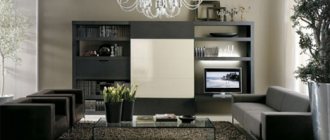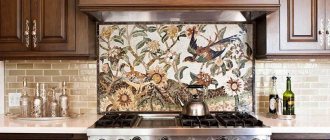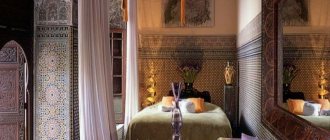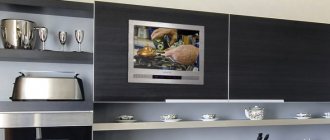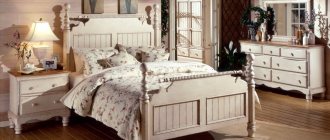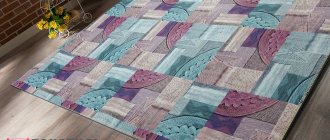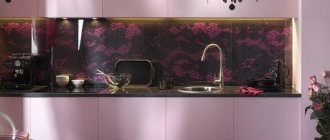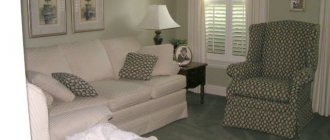Vintage in the interior is a noble, sophisticated and unusual combination of the present and the past. Despite the fact that this style is just over fifteen years old, it has already won an entire army of fans. Since its appearance, it has remained in the top of the most popular room design options.
Why is the mixture of modern and antique so loved by people all over the world? Some explain this by nostalgia for the past, others by the incredibly cozy and stylish atmosphere. In any case, vintage design does not give up its leadership and is becoming more and more popular every year.
What is vintage
The word “vintage” came into design and fashion from French winemakers. This is what the masters called elite wines of high quality and, as a rule, long aging. Then the term began to be used to designate a whole trend in home decoration.
Vintage style in the interior is a skillful combination of modern and ancient attributes in room design. In this case, not just antique things are used, but objects from past eras that bear the imprint of time. They often become the center of the composition, around which the overall design idea is built.
But not only rarities and antiques can be used to create a vintage style in the interior. Designers often resort to the method of artificial aging of new furniture, which is popular today. In this case, various techniques and techniques are used, thanks to which completely new things have a patina of age.
How did the vintage style come about?
“Old-fashioned style” was invented not so long ago. His date of birth can be considered 2002. It was then that American designer Patrick Willis decided to build an unusual house. The shape of the building is elliptical, the rooms are made in the form of a honeycomb. But the idea almost failed. The designer only had enough money to build an unusual house. There was no budget left for interior decoration. The project deadline was moving inexorably towards completion.
Then the inventive interior designer decided to find an original way out of the situation. He bought things from the flea market, washed them, put them in good shape and furnished the rooms with them. Willis called his brainchild “vintage,” thereby making it clear that second-hand furniture adds the same value to the interior as the aging of exclusive wine. The idea was accepted with a bang. And to this day, vintage style interiors remain the most popular for decorating homes, cafes, restaurants, and hotels.
Time machine effect
Accessories are the final accents of the interior, the main purpose of which is to transport you to an era far from modernity. Choose the most stylish, original things. Both antiques and their skillful imitation are suitable. The vintage style is characterized by abundance and overloading of the interior with details - you want to consider such rooms as a work of art, because something unusual is hidden in every corner.
What you need to pay attention to when decorating an interior in vintage style:
•informativeness of accessories - they should not be faceless, each cup, candlestick or painting has its own history, they “guess” the era that formed the basis of the interior idea;
• accessories, furniture and decoration must belong to the same era and one country (albeit in different time periods). If you combine English porcelain and checkered rugs with a Russian samovar, it will not be vintage, but country;
• lush curtains and curtains with floral motifs are welcome. But there is one nuance here: if the walls are plain, colorful curtains will be appropriate, but if wallpaper with a pattern was used in the decoration, it is better to choose curtains without ornaments. Long tablecloths, covers and bedspreads, hand-knitted carpets - all this is appropriate to use in vintage style;
• vintage mirrors of unusual shape or decorated with antique frames;
• for a vintage style, select accessories from materials that can age well: brass, wood, forged metal, ceramics. The entire decor should convey the feeling of many years of aging; matte faded paints, cracked varnish or enamel, scuffs, chips are welcome. Metal is characterized by rust or greened copper - in a word, each object represents a bright individuality that has lived a long and interesting life;
• in a vintage interior there are dried flowers as a reminder of a bygone time, but if you are not a fan of herbariums and ikebana, feel free to use living flowerpots, preferably blooming ones;
• and the last rule: the more accessories there are in the room, the less color and furniture there should be in the interior.
You might be interested in:
High-tech style in interior design - keeping up with the times High-tech style in interior design is one of the youngest postmodernist styles, which is sometimes called rationalism. The idea of style is an artistic interpretation...
Eclecticism in apartment interior design: mixing styles in a new way At the end of the 19th century, eclecticism was any mixture of historical styles in the desire to show originality and find something new in the already well-worn old. Today…
Polyurethane moldings in interior design Molding is a finishing border (plank) that is most often used to mask the joints between the wall and the ceiling. The most common material is polyurethane...
Japanese style in the interior - oriental flavor in the design of an ordinary apartment Until recently, Japanese minimalism was one of the most popular interior designs. But the fashion for the style of the Land of the Rising Sun died down quite quickly. Firstly,…
Features of vintage style in the interior
Like any other trend, the vintage style has its own characteristic features that make it unique, unlike other trends in design.
- Fusion of old and new. Modern design is necessarily complemented by antique objects (or things artificially aged).
- Furniture “in years”. Vintage style is impossible without a sofa, armchair or chest of drawers with obvious “marks” of time: scuffs, faded paints, cracks.
- Colors faded by time. Another prerequisite for style is a calm color scheme. The interior shades should be pale, look a little faded, having lost their brightness and contrast.
- Natural materials for finishing. To renovate rooms, it is better to choose natural materials such as wood, forging, linen, cotton, silk, ceramics.
- Decor from the past. Details also matter to create an atmosphere of modernized antiquity. Any items from garage or attic storage will do: retro photos, antique figurines, frames or openwork bedspreads.
- Simplicity and a touch of roughness. The decoration of the walls and ceiling is done simply, without frills, mainly in plain neutral shades. Surfaces can be covered with wallpaper with a floral print, but in soft colors. Very often the design contains rough wood. A natural wooden texture peeks out from under the peeling paint, the roughness of which is revealed by the peeling paint.
Wallpaper
Color is the basis of any interior. Vintage tends towards pastel colors, but there are interiors with rich colors, which are achieved through the use of a special type of wallpaper.
Wallpaper in vintage style is characterized by patterned ornaments (flowers, intertwining branches). Vintage wallpaper looks as if it has faded slightly with age. There are three types of such wall coverings:
- wallpapers with a contrasting pattern in the Art Nouveau style, in addition to them, striped wallpaper is used;
- wallpaper with bright Japanese motifs; such material has a background of rich color, and it depicts birds or flowers;
- wallpaper with small or large discreet patterns, designed in pastel colors.
In a room decorated in vintage style, it is customary to cover all the walls with wallpaper, but what should catch your eye, first of all, is the furnishings, not the wallpaper.
Photo: wallpaper in pastel colors with small patterns
Photo: companion wallpaper with a large pattern
Vintage Style Rules
Some designers claim that vintage style has no rules. Other experts say that some nuances still need to be followed. So, what are the do's and don'ts of creating "distressed modernity"?
Recommended:
- Use antiques to create a subtle hint of nostalgia for a bygone era. Most often this is the XIX-XX century.
- Maintain symmetry. By its nature, the vintage style in the interior is close to classic. And for classics, a clear geometry of space is important. There is no need to clutter the room chaotically. Try to streamline it, achieve an atmosphere of warmth and comfort with a light retro note.
- Do not use modern repair technologies. When decorating a room in this style, it is better to abandon laminate, linoleum, suspended ceilings, wall panels and other modern techniques for decorating the room.
Not recommended:
- Overload the interior with antiques.
- A thing from the past should stand out against the background of a modern environment and be a highlight of the design.
- Decorate your home with dilapidated, dilapidated rubbish. A touch of antiquity, created by time or human hands, should decorate the rooms, and not scare away with its dilapidated appearance. Therefore, it is important to distinguish unusable junk from a truly beautiful antique item.
- Dedicate all rooms to this style. No matter how beautiful it is, if you overdo it, you can give the interior a museum-like touch. Vintage should be present as a small inclusion in the overall interior of the home.
Otherwise, complete freedom for creativity is provided.
How to recognize the vintage style in the interior of a home by decor?
Vintage interiors have a unique energy. Here you can notice the elements:
- classics;
- retro style;
- Provence;
- country.
When decorating a home, you need to pay a lot of attention to the decor. There shouldn't be too much of it. The main thing is that all items match each other according to your mood.
Emphasizes vintage style:
- Dishes. It can be displayed by placing it on the shelves of an antique sideboard. Sometimes the walls are decorated with painted plates.
- Unusual floor vase. It can be large and bright, or place several small ones on a table, dressing table, nightstand.
- Flowers. Anything goes: fresh bouquets, dried flowers, ikebana. Here you don’t have to limit yourself - plants will be appropriate in large quantities and everywhere. You can even put a vase of flowers in the bathroom.
- Wall Clock. This element is usually selected in an antique style and placed as decoration in the living room or hallway.
- Abundance of textiles. In the bedroom these are bedspreads and pillows. A sofa with thick textile upholstery in a floral print will look great in the living room. In the kitchen, these could be towels, oven mitts, chair covers, tablecloths, and plenty of napkins.
- Candlesticks of different shapes. As a rule, you have to try hard to find an interesting model made of bronze or brass.
There is one trick. To advantageously present an old piece of furniture or decor, you need to use contrast. For example, peeling paint on a dresser will look beautiful if there is a perfectly polished mirror nearby.
But chrome fittings, darkened by time, scratches and chips on furniture can be emphasized by placing a sofa upholstered in expensive velvet, velor or tapestry next to it.
What makes up vintage interior design?
There are many techniques, design techniques and materials that allow you to create beautiful interiors with a touch of antiquity.
- Antiques. It looks elegant, gives coziness and gives a retro atmosphere to the room.
- Artificial aging of objects. With this technique, any piece of furniture or decor can become part of past centuries.
- Old-fashioned decoration of walls and floors. On the building materials market today there is a huge selection of finishing materials to achieve the effect of antiquity. For example, floorboards with a vintage finish or wallpaper with a print that has faded with time.
- Stucco molding. Plaster curls and flowers perfectly reflect the spirit of graceful centuries gone by.
- Wallpaper with large print. Lush flowers, large birds, leaves or ornaments - these are the kinds of drawings that adorned the walls in the last and the centuries before last. But the print must be faded and faded with time. Such vintage wallpaper can be ordered in a specialized online store.
- Dried flowers. You can make bouquets of dried roses, chrysanthemums or asters yourself or buy them ready-made. This decor is actively used by designers for vintage style.
- Dim lighting. Rooms should be softly lit. Lampshades, table lamps and crystal chandeliers are often selected for this purpose. They diffuse the light, making it less bright, and create a wonderful retro effect.
- Stylish details. Various souvenir items will help you recreate the era of bygone years: plaster figurines, porcelain dolls, forged figurines, rare boxes, antique frames, retro photographs and much more. But here it is important to take precautions so that the room does not turn into an antique shop.
Vintage style living room accessories
In order for the vintage living room to seem completely complete, it is necessary to dilute the room with antique items. As noted above, this style is successfully emphasized:
- knitted napkins;
- china;
- figurines;
- floor vases;
- music boxes;
- lace;
- embroidery.
Many people still have gramophones and gramophones at home, so they can be given a second life by finding a place in a vintage living room. You can also place table lamps in fabric lampshades with fringe around the room. You should hang a mirror on the wall, in a frame with a floral design, and also hang black and white family photographs. Curtains in a vintage interior should be sewn strictly from natural fabrics (cotton, linen, possibly silk) with a floral or simply patterned print. In such a room, you definitely need to find a place for living flowering plants; they will significantly enliven the atmosphere and help you get away from the museum feeling. Yes, and also, so that the room does not look like a museum, it is important to observe the measure. If the furniture is covered with a floral print, then it is better to choose plain wallpaper, and in the reverse order, the walls are colorful - a sofa and armchairs, plain.
Upholstered furniture in vintage style
In a vintage setting, the main word remains not in the general background or even in the furniture, but in the small decor. Even little things like:
- antique dolls;
- copper teapots;
- old plates;
- worn woven-bound books;
- mirrors in massive ornate frames;
- porcelain trinkets;
- black and white photos.
Vintage furniture
Furniture plays an important role in creating a special, slightly rare flavor. And often it is she who becomes the “signal flag” of vintage style. Therefore, she should look accordingly.
Worn surfaces, chips, grooves with loose paint - everything should indicate that the furniture has its own, long history. Similar interior items can be purchased at construction hypermarkets. But there is an easier (and cheaper) way - to age the furniture yourself. There are a number of special hand made techniques:
- "Crackle." A special “craquelure” varnish is used. Under its influence, the paint cracks and creates an interesting antique effect.
- Dry brush. A very simple way to achieve scuff marks on any textured surface. All you need to do is dip a hard-bristled brush into the paint, dry it with a cloth and lightly paint over the wood or metal.
- Sanding. This method can also achieve an antique finish. The result is that one color is visible through the other. The technique is completely uncomplicated. The surface is painted with two layers of paint of different tones, then lightly sanded with sandpaper.
- Wax aging. The technique is similar to the previous one. But only after the first layer of paint you need to walk along the edges of the furniture with a wax candle. After which the second tone is applied. When it dries, the “waxy” parts of the surface must be rubbed with a regular sponge. The paint in areas rubbed with wax will come off quickly and unnoticed.
- Bituminous varnish and patina. Two materials that are ideal for aging metal. Metal surfaces are painted with acrylic paint. The top is treated with patina or bitumen varnish. Excess is removed with a napkin. This method combines well with other types of surface aging.
Successful color combinations in the interior
When creating textile design, you need to remember that vintage, as an interior style, does not like dark or too bright colors. Everything around is subject to one principle - the formation of light airspace. Therefore, textiles are chosen to match the walls and wallpaper. And in order to prevent both components from merging with each other, close combinations of semi-shades or colors close to each other “in spirit” are allowed.
The most advantageous options in a vintage interior: pink wallpaper and upholstery of upholstered furniture, made in the color of young grass, or blue wallpaper and curtains in the color of an ash rose. Look at the photo how well similar combinations made in vintage style work.
As you can see, the textiles do not merge with the overall palette, so the entire interior as a whole does not look like one merged spot.
Vintage in room design
Vintage elements will be appropriate in almost any room. You just need to know some of the features of embodying the antique style in different rooms.
Living room
The reception room can be decorated with antique sofas and armchairs. The main rule is to choose an era and stick to its features. For example, to recreate a 19th-century interior, the ideal option would be furniture with curved legs and rounded backs.
For the living room walls, it is better to choose a plain, neutral palette. You can cover the walls with wallpaper with large flowers or butterflies, but always with a faded effect. A good solution for the floor is aged parquet, antique ceramic tiles or large vintage boards.
Bedroom
The palette in the bedroom must be soft. Then the room will be filled with comfort, coziness and tranquility. Peach, pearl, beige, sand, pastel blue and light gray shades best cope with the task of pacification.
You can also use vintage wallpaper in pastel colors for wall design. A bed with a wrought-iron headboard and a canopy is a classic of the vintage genre. If you complement it with a chandelier with forged curls, you will get a stylish tandem from the past. You should also pay attention to textiles. Pillows with ruffles, curtains with tassels, knitted blankets and capes with frills - all this will be appropriate in this interior.
Hallway
Hangers made of elegant forging with skillful weaves are perfect for a vintage hallway. It would be nice to hang a large oval mirror in a wooden frame, decorated with carvings, in the hallway.
If the room allows, then the walls can be decorated with antique shelves, placing napkins on them and arranging rare figurines. But it’s better to avoid massive cabinets and chests of drawers. Firstly, previously it was not customary to place cabinets in the hallway. And secondly, a home “lobby” rarely pleases with a large number of square meters, and an ordinary closet risks “eating” the entire space.
Kitchen
The main requirement for a vintage kitchen is that modern appliances should not be too noticeable in the interior. An antique sideboard, antique kitchen utensils, worn chairs and stools, shelves with porcelain from bygone eras - all these touches will create a magnificent picture of the past, which by chance ended up in the modern world.
Since the early 2000s, vintage design has been so loved all over the world that it still remains the most relevant interior design option. But it is not as simple as it seems at first glance. Style lends itself only to those who know its history, features and rules. Read about all this in our article.
Article on the topic: Mediterranean style in the interior
Small apartment in Scandinavian style - simple and elegant interior
Which rooms should I decorate and how?
Vintage style is suitable for decorating almost all rooms in the apartment. The exceptions are the children's room and the bathroom, where it is sometimes impossible to implement it. Therefore, it is most often found when finishing several spaces:
- Living room. Here the main emphasis is on sofas, coffee tables and cabinets with signs of use. For walls and ceilings, a discreet, monochromatic palette is selected. It is advisable to leave boards or lay parquet on the floor; it will look most beautiful.
- Bedroom. This is a solution for adults or teenagers who are passionate about similar topics. An exceptionally delicate, soft palette is selected. To fill the space with comfort and warmth. The highlight of the vintage style for this room is a bed with a canopy or wrought-iron headboard. The decor can be diluted with a variety of pillows with ruffles, blankets, figurines, a mirror in an elegant frame and other accessories.
- Hallway. Here all attention will be focused on metal hangers, chests of drawers and shoe racks. It would be a good idea to decorate it with a variety of shelves and other storage areas on which to place photographs or other items in a retro spirit.
- Kitchen. One of the main nuances is that modern technology should not stand out from the rest of the decoration. It must be hidden one way or another, or models with the appropriate design must be selected. A variety of plates, figurines, old jars and other kitchen utensils are used as decoration.
Furnishing an apartment in vintage style is not so difficult. It is enough to know the basic nuances and approach this process creatively, and you will get a cozy, beautiful and unusual space filled with the spirit of antiquity. At the same time, it is not at all necessary to buy only old items; now you can often find furniture and accessories with artificial aging that can become a worthy replacement for antiques.
